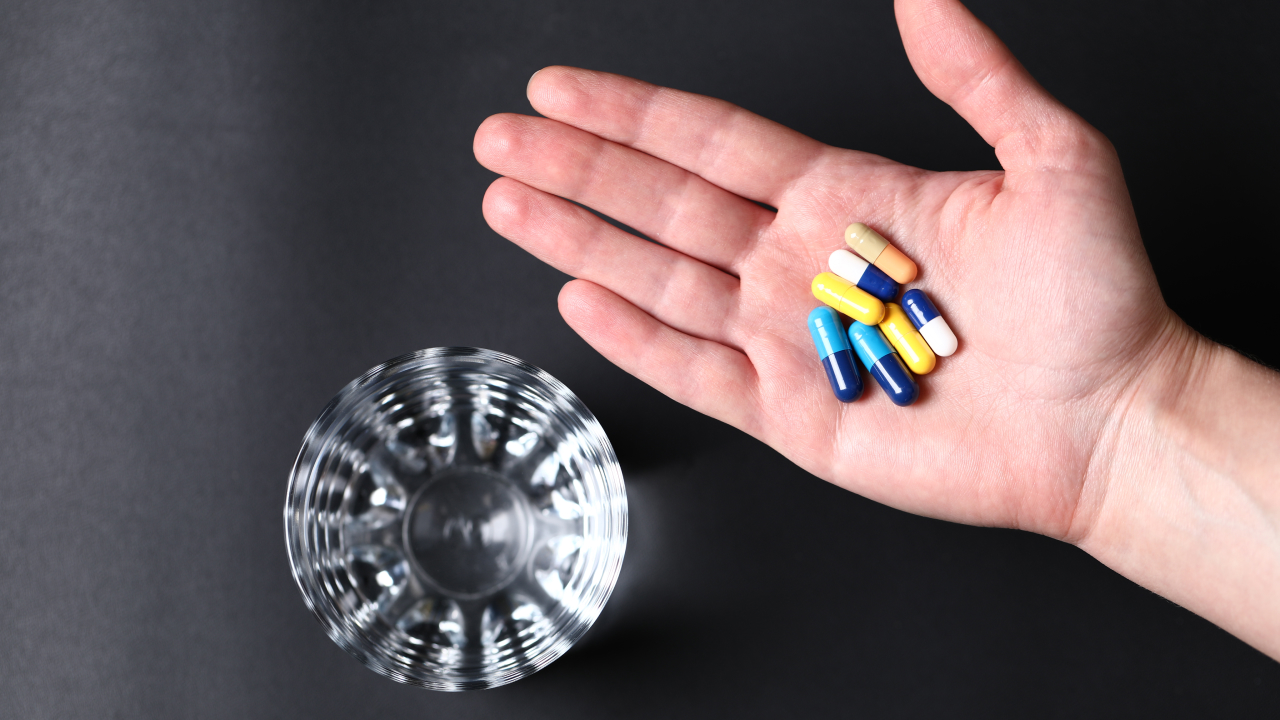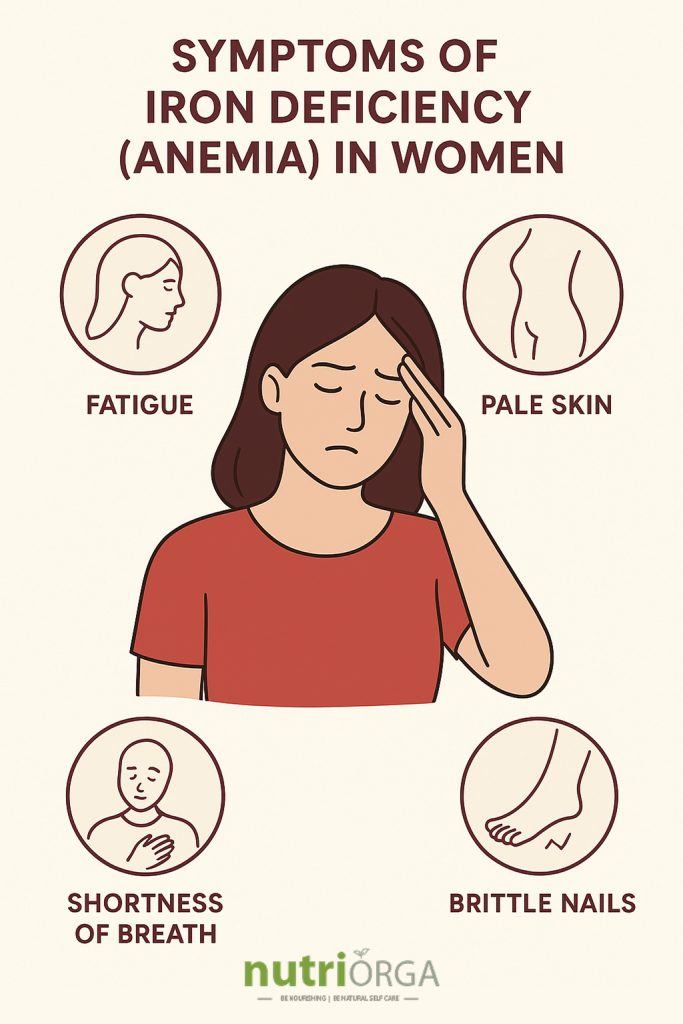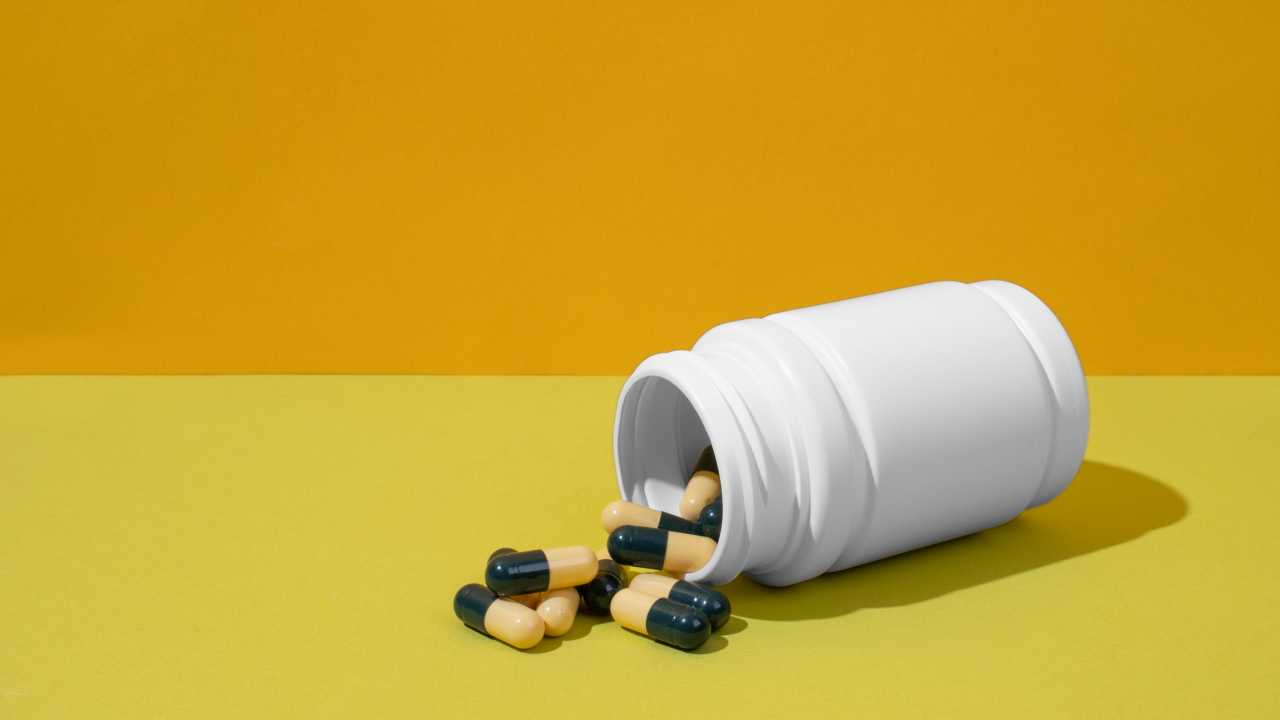You’ll come across woman in Pakistan who wakes up feeling lethargic even before the day begins. It’s increasing with each passing day for nearly every other women around us. The majority tries to brush it off by giving excuses or blaming long work hours. But deep down, the real reason often lies in the symptoms of anemia in women, as their bodies are running low on iron.
It shows a slow effect, stealing that natural glow and energy from you. Be it our Mothers, Sisters, Wives, or Friends. No matter how much they eat or rest, this restless feeling persists.
The deficiency of iron isn’t something rare. You’ll find a huge population of women juggling with their daily functioning due to iron deficiency. A few mindful changes in your routine might help you to gain back that lost focus and energy, so this is a bright side of hope.
How Big is the Problem?
- As per different studies and surveys, there is a high percentage of Pakistani women of reproductive age who are anemic. The number may vary by study and region-wise, but a rough ratio of 40% and above 70% in different groups of women is observed(including urban vs rural, pregnant vs non-pregnant).
- Another systematic review and meta-analysis pooling many local studies reported very high pooled prevalences in 2024, stating that ~70.4% in pregnant women and ~54.6% in non-pregnant adolescent/adult women. Thus, varying provinces and methods of study.
The Causes of Anemia in Pakistani Women

Iron deficiency arises when iron intake or absorption doesn’t meet the body’s needs, or when losses are high. In Pakistan, several overlapping reasons keep the iron deficiency symptoms in women common and widespread.
Diet Patterns and Low Bioavailable Iron
Some typical diets might be high in wheat and other cereals, and can be low in food for iron deficiency and iron-bioavailable foods (such as red meat). Even when people eat plant-based iron sources like spinach or lentils, their bodies absorb less non-heme iron than heme iron from animal foods. Pairing these foods with vitamin C enhances absorption, but many people fail to do so.
Menstrual Blood Loss and Reproductive Factors
Women also lose iron during menstruation, which increases their need to replenish it through diet or supplements. The menstrual bleeding causes a monthly loss of iron. Those women who experience prolonged or heavy periods, with short-pregnancy intervals or multiple pregnancies, also deplete iron stores faster. Several studies have proven it as a consistent risk factor.
Pregnancy and Lactation
For fetal growth and increased blood volume during pregnancy, the iron requirements substantially increase. Often, the iron stores are low in pre-pregnancy, thus the pregnancy either unmasks or worsens the anemia.
Infections, Inflammation, and Parasitic Disease
If there are repeated infections, inflammation, while in some rural areas, intestinal parasites contribute to anemia. This causes loss of blood or blocks iron absorption. While PCR-level diagnostics aren’t always reported in field studies, these factors are known contributors in low-resource settings.
Cultural & Socio-Economic Factors
The cultural and socio-economic factors have a role in bringing a rise as women in some households eat less or last, a nutrient-poor diet may be more affordable, and accessible health services are variable. Rural residence, low female education, and poverty are the factors that have a repeated association with higher prevalence of anemia.
Recognize the Signs – What to Watch for
The symptoms of anemia in women often go unnoticed until they interfere with daily life. Common signs include:
- Low on energy(not fixed by sleep), feelings of persistent fatigue
- Pale skin color, pale inner eyelids, or brittle nails.
- Palpitations, even mild exertion, leave you short of breath.
- Dizziness, headaches, or difficulty concentrating
- Hair fall and restless legs sometimes
- Some people develop pica, a condition where they crave and eat non-food items such as ice or clay.
If you have several of the above symptoms of anemia in women, you’ll first need to go for a CBC (complete blood count) and serum ferritin test (the ferritin indicates iron stores). These tests are easily available plus affordable in the majority of Pakistani clinics.
Food First – Dietary Strategies that Work

For the prevention of this deficiency, what you can do is to bring a change in your diet because that is the safest first line, which will work.
Best Iron Sources (Easy Local Picks)
- Including mutton, beef, and liver in your diet, even in small portions, helps a lot as they are rich in iron.
- The other good alternatives are fish and chicken.
- Central to Pakistani cuisine, the lentils (dals), chickpeas (chana), and beans are also useful only when prepared right.
- Adding leafy greens like spinach (palak), methi (fenugreek), and sarson can also do wonders for you.
- The healthiest plus handy options you can add in the category of nuts and seeds include pumpkin seeds, sesame, or almonds.
- Iron-fortified foods, such as certain wheat flours and cereals, help improve iron levels across the population.
Boost Absorption – Practical Hacks
A few of these practical hacks might work well for boosting your iron absorption.
- You should pair your iron meals with vitamin C (guava, oranges, tomatoes, lemon) for the best results and progress. The reason for using it is that vitamin C promotes non-heme iron absorption substantially.
- The tannins present in coffee/tea block the iron uptake. Try avoiding coffee or tea around meals. You can take a gap of 1 to 2 hours rather than immediately drinking after food.
When Diet Isn’t Enough – Supplements & Safe Usage

Iron supplements are commonly used when there is moderate to severe iron deficiency. Perhaps one needs to take it correctly, along with medical guidance.
Common Supplements Available in Pakistan
- Ferrous sulfate: it is the most common option, which has good efficacy (brands: locally available preparations).
- Ferrous gluconate / ferrous fumarate: for some people, it’s often gentler on their stomach.
- Combined formulations: a few of them might contain iron + folic acid (essential at the time of pregnancy).
If you’re choosing among different products, it’s best to look for trusted health & wellness supplement brands that meet safety standards and have verified ingredients, ensuring better results and minimal side effects.
How to Take Iron Pills? (Practical Tips)
- The iron pills are best absorbed if taken on an empty stomach. In case it causes nausea, take it with a small snack.
- To boost the absorption, pairing it up with vitamin C is beneficial(a vitamin C tablet or an orange juice glass)
- It is suggested to avoid taking tea, coffee, milk, or calcium within an hour of taking iron as its absorption reduces.
- It requires time in its replenishment, so be patient. Also, the doctors usually advise continuing it for at least 3 months after Hb normalizes in the refilling stores.
Conclusion
Iron deficiency is not something that needs to be accepted as a part of your life. In fact, you are required to pay attention to the symptoms of anemia in women, the food you’re consuming, what supplements your body needs, and going for regular checkups. All of these will definitely help to make a difference. An adequate diet with some lifestyle changes and awareness regarding women’s health helps to deal with the issue.


